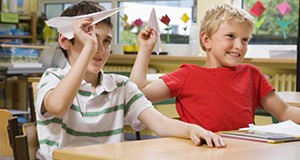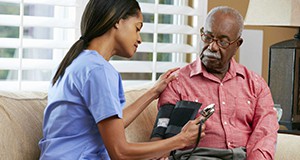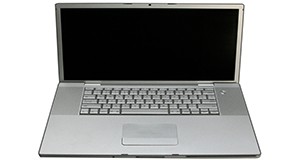 The number of resources available online grows every day. Unfortunately, there are no regulations to ensure that the information on these websites is accurate. Older adults can readily access reliable information on the Internet by focusing on government and education sites. This 2-page fact sheet is a major revision that provides a list of trustworthy Internet sources related to nutrition, health, food safety, and general interest for older adults. Written by Linda B. Bobroff and Leigh Ann Martin, and published by the UF Department of Family, Youth and Community Sciences, revised January 2016.
The number of resources available online grows every day. Unfortunately, there are no regulations to ensure that the information on these websites is accurate. Older adults can readily access reliable information on the Internet by focusing on government and education sites. This 2-page fact sheet is a major revision that provides a list of trustworthy Internet sources related to nutrition, health, food safety, and general interest for older adults. Written by Linda B. Bobroff and Leigh Ann Martin, and published by the UF Department of Family, Youth and Community Sciences, revised January 2016.
http://edis.ifas.ufl.edu/fy102
Tag: Family Youth and Community Sciences Department
Vida Saludable: Sitios web confiables
 The number of resources available online grows every day. Unfortunately, there are no regulations to ensure that the information on these websites is accurate. Older adults can readily access reliable information on the Internet by focusing on government and education sites. This 3-page fact sheet is a major revision of the Spanish version of FCS-8587, Healthy Living: Reliable Websites. It provides a list of trustworthy Internet sources related to nutrition, health, food safety, and general interest for older adults. Written by Linda B. Bobroff and Leigh Ann Martin, and published by the UF Department of Family, Youth and Community Sciences, revised November 2015.
The number of resources available online grows every day. Unfortunately, there are no regulations to ensure that the information on these websites is accurate. Older adults can readily access reliable information on the Internet by focusing on government and education sites. This 3-page fact sheet is a major revision of the Spanish version of FCS-8587, Healthy Living: Reliable Websites. It provides a list of trustworthy Internet sources related to nutrition, health, food safety, and general interest for older adults. Written by Linda B. Bobroff and Leigh Ann Martin, and published by the UF Department of Family, Youth and Community Sciences, revised November 2015.
http://edis.ifas.ufl.edu/fy103
Healthy Eating: Drink to Your Health
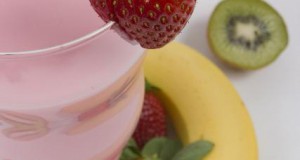
Shakes and smoothies are a great and delicious way to incorporate more fruits and nutrients into your diet. This 2-page fact sheet is a major revision which provides a variety of refreshing and exciting smoothie and shake recipes as well as preparation tips. Written by Jennifer Hillan, Emily Minton, and Linda B. Bobroff, and published by the UF Department of Family, Youth and Community Sciences. Original publication date: March 2004. Revised March 2012 and September 2015.
http://edis.ifas.ufl.edu/fy696
Cooking with Fresh Herbs
 People worldwide are becoming more adventurous when cooking with fresh herbs. If you are just starting to use fresh herbs in your cooking or need a refresher, these tips for washing, storing, and cooking with herbs will lead you in the right direction. This 8-page fact sheet discusses the history of herbs, how to buy them fresh, how to wash and store them, dried herb blends, common herb and food combinations, and several recipes using herbs. Written by Emily Minton and Martha Maddox and published by the Department of Family, Youth, and Community Sciences, October 2015. (Photo credit: Credit: LiliGraphie/iStock/Thinkstock.com)
People worldwide are becoming more adventurous when cooking with fresh herbs. If you are just starting to use fresh herbs in your cooking or need a refresher, these tips for washing, storing, and cooking with herbs will lead you in the right direction. This 8-page fact sheet discusses the history of herbs, how to buy them fresh, how to wash and store them, dried herb blends, common herb and food combinations, and several recipes using herbs. Written by Emily Minton and Martha Maddox and published by the Department of Family, Youth, and Community Sciences, October 2015. (Photo credit: Credit: LiliGraphie/iStock/Thinkstock.com)
http://edis.ifas.ufl.edu/fy1209
Consejos para pleanear contra desastres para gente mayor
 FY1462 is the Spanish language version of FY620, Disaster Planning Tips for Older Adults. This 4-page publication offers an abundance of information pertaining to water storage and use, food, first aid, important papers, electronics, medical needs, stress reduction, and evacuation which can help older adults plan for natural disasters and other emergencies. Written by Carolyn Wilken, Linda B. Bobroff, and Emily Minton, and published by the Department of Family, Youth and Community Sciences, May 2003.
FY1462 is the Spanish language version of FY620, Disaster Planning Tips for Older Adults. This 4-page publication offers an abundance of information pertaining to water storage and use, food, first aid, important papers, electronics, medical needs, stress reduction, and evacuation which can help older adults plan for natural disasters and other emergencies. Written by Carolyn Wilken, Linda B. Bobroff, and Emily Minton, and published by the Department of Family, Youth and Community Sciences, May 2003.
http://edis.ifas.ufl.edu/fy1462
Get SMART: Improve Your Extension Objectives

SMART Objectives assist educators and program planners in developing strong objectives that are Specific, Measurable, Achievable, Relevant and Time-bound. This 3-page fact sheet was written by David C. Diehl and Sebastian Galindo-Gonzalez. Published by the UF Department of Family Youth and Community Sciences, June 2012 and revised September 2015.
http://edis.ifas.ufl.edu/fy1327
Hurricane Preparation: Evacuating Your Home

Every year Floridians are faced with the possibility of hurricanes. Hurricanes have had devastating effects on many communities in Florida, and every year the possibility exists that communities will be hit by hurricanes during the summer and fall months. During the months of potential hurricanes, it is important to plan for the worst and hope that it never happens. For example, you and your family may be asked to leave your home due to some emergency conditions in your community. Have a plan for a possible evacuation and be prepared to evacuate. This 3-page fact sheet lists fifteen things to keep in mind. Written by Elizabeth Bolton and Muthusami Kumaran and published by the Department of Family, Youth and Community Sciences, May 2015.
http://edis.ifas.ufl.edu/fy747
Using the Decision-Ade(TM) Segmentation Strategy to Better Understand Extension Audiences

Decision-Ade™ is a tool Extension can use to better understand how residents with a range of household budgets feel about their utility bills. Analyzing households in terms of both income and utility bill “botheredness” creates a more comprehensive picture of that household’s utility use and its willingness to modify utility consumption relative to other households. This 5-page fact sheet uses survey data of Florida residents to demonstrate the insights Decision Ade™ can provide and how those insights can inform Extension programming. Written by Randall Cantrell, Laura Warner, Joy Rumble, and Alexa Lamm, and published by the UF Department of Family, Youth and Community Sciences, July 2015.
http://edis.ifas.ufl.edu/fy1461
Food and Fitness: Myths and Truths
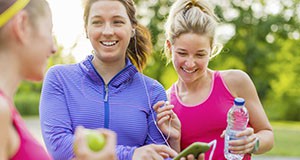
Do you know how much water you should drink before exercise? Does loading up on carbs before a strenuous cardio workout improve performance? This 6-page fact sheet debunks some common myths about nutrition and fitness and offers other helpful advice for those who wish to stay active and eat a healthy diet. Written by Linda B. Bobroff and Amy Mullins, and published by the UF Department of Family, Youth and Community Sciences, June 2015.
http://edis.ifas.ufl.edu/fy470
Seguridad Alimentaria: Crucigrama de alimentos do alto riesgo
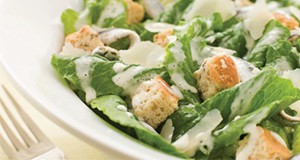 Algunos alimentos pueden causar más enfermedades alimentarias que otros. La leche ó jugos no pasteurizados no son seguros para consumir. Alimentos que no han sido cocinados, como lo son los huevos crudos ó a medio cocinar son particularmente riesgosos.
Algunos alimentos pueden causar más enfermedades alimentarias que otros. La leche ó jugos no pasteurizados no son seguros para consumir. Alimentos que no han sido cocinados, como lo son los huevos crudos ó a medio cocinar son particularmente riesgosos.
This 2-page fact sheet is the Spanish language version of Food Safety: High-Risk Foods Crossword. Written by Jennifer Hillan and Linda B. Bobroff, and published by the UF Department of Family Youth and Community Sciences, June 2015. (Photo Credit: Catherine Yeulet/iStock/Thinkstock)
http://edis.ifas.ufl.edu/fy1170
Positive Discipline: Behavioral Management Skills for Parents and Teachers, Part 3: Fostering the Parent-Child and Teacher-Student Relationship to Build Responsibility
Tell me and I forget,
Teach me and I may remember,
Involve me and I learn.
The general goal of healthy parenting and teaching is to produce children and students who can think critically, make good decisions, and become independent, accountable, responsible, and contributing members of society. Part 3 of this Positive Discipline: Behavioral Management Skills for Parents and Teachers series covers tips and strategies to help parents and teachers build critical thinking and positive behavioral skills in children. Several of these strategies that can help parents and teachers achieve these goals through “love and logic” are discussed in this 6-page fact sheet written by Victor Harris, Whitney Fung, Sarah Ellis, and Alison Schmeer, and published by the UF Department of Family Youth and Community Sciences, July 2015. (Photo Credit: Thinkstock.com/iStock/natasaadzic)
http://edis.ifas.ufl.edu/fy1460
Positive Discipline: Behavioral Management Skills for Parents and Teachers, Part 2: General Approaches to Managing Behavior
When a child is locked in the bathroom
With water running
And he says he is doing nothing
But the dog is barking,
Call 911.
–Erma Bombeck
Research indicates that there must be at least an 8-to-1 positive-to-negative interaction ratio for parents and teachers to have a positive relationship with their children and students. Put simply, both verbal and non-verbal communication needs to be generally positive. Learning how to steer a child or a student toward managing his or her own behavior in healthy ways requires both knowledge and skills that make it easy to have positive interactions and behavior change. This 6-page fact sheet will help you identify specific approaches to successfully managing appropriate and inappropriate behavior at home and in the classroom. It outlines four principles of behavior management, and describes several strategies before providing a practice activity. Written by Victor Harris, Whitney Fung, Sarah Ellis, and Alison Schmeer, and published by the UF Department of Family Youth and Community Sciences, July 2015. (Photo Credit: Thinkstock.com/Jupiterimages/Creatas Images)
http://edis.ifas.ufl.edu/fy1459
Positive Discipline: Behavioral Management Skills for Parents and Teachers, Part 1: Types of Misbehaviors and Keys to Success
“Before I got married I had six theories about bringing up children; now I have six children, and no theories.” — John Wilmot
Parents and teachers often experience a lot of insecurities, especially with regard to helping children manage their own behaviors. Not surprisingly, there are many similarities in the skills that effective parents and teachers use to help children manage their own behavior successfully. Building a foundation for healthy and effective parenting and teaching begins with understanding some different types of misbehaviors. This 4-page fact sheet discusses four common types of misbehaviors, encourages the reader to identify healthy and unhealthy practices, and continues with key factors of effective parenting and teaching. Written by Victor Harris, Whitney Fung, Sarah Ellis, and Alison Schmeer, and published by the UF Department of Family Youth and Community Sciences, July 2015. (Photo credit: Thinkstock.com/iStock)
http://edis.ifas.ufl.edu/fy1458
Healthy Living: Diabetes
Diabetes is a serious health condition that occurs when a person’s body has difficulty making or using insulin, which results in high blood glucose (blood sugar) and can lead to other complications. This 3-page facts sheet covers the effects of high blood glucose, who is at risk, the symptoms and management of the condition, and additional resources for those with or at risk of developing diabetes. Written by Linda B. Bobroff, Karla P. Shelnutt, and Paulina Wittkowsky, and published by the UF Department of Family Youth and Community Sciences, June 2015.
http://edis.ifas.ufl.edu/fy078
Breast Cancer: Neoadjuvant Chemotherapy
 Neoadjuvant, or preoperative, chemotherapy is the use of chemotherapy to treat breast cancer before surgery. If your doctors have suggested that you consider this treatment, you probably have questions about it. This 4-page fact sheet provides an overview of chemotherapy treatment, potential side effects, and major benefits. Written by Barbara F. Shea and Martha C. Monroe, and published by the UF Department of Family Youth and Community Sciences, April 2015. (Photo: iStock/Thinkstock.com)
Neoadjuvant, or preoperative, chemotherapy is the use of chemotherapy to treat breast cancer before surgery. If your doctors have suggested that you consider this treatment, you probably have questions about it. This 4-page fact sheet provides an overview of chemotherapy treatment, potential side effects, and major benefits. Written by Barbara F. Shea and Martha C. Monroe, and published by the UF Department of Family Youth and Community Sciences, April 2015. (Photo: iStock/Thinkstock.com)
http://edis.ifas.ufl.edu/fy897
Vida Saludable: Examinando el nivel de glucosa en la sangre
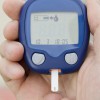 Examinar el nivel de glucosa en su sangre es una parte importante en el manejo de la diabetes. El conocer los valores de glucosa en su sangre le indica que tan eficiente está funcionando su plan de cuidado y si debe hacer algún cambio. ¡Continúe leyendo para aprender más!
Examinar el nivel de glucosa en su sangre es una parte importante en el manejo de la diabetes. El conocer los valores de glucosa en su sangre le indica que tan eficiente está funcionando su plan de cuidado y si debe hacer algún cambio. ¡Continúe leyendo para aprender más!
This 4-page fact sheet is the Spanish language version of Healthy Living: Checking Blood Glucose. Written by Jennifer Hillan and Linda B. Bobroff, and published by the UF Department of Family Youth and Community Sciences, January 2015. (Photo: iStock/Thinkstock.com)
http://edis.ifas.ufl.edu/fy908
Healthy Eating: Nutrition and Diabetes
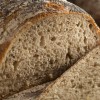 A healthy diet, along with exercise and medication, can help control diabetes and reduce the risk of complications. A healthy lifestyle also helps reduce the chances of developing diabetes for those who are at high risk. For a healthy diet, follow these tips. This 3-page fact sheet was written by Linda B. Bobroff, Jennifer Hillan, and Emily Minton, and published by the UF Department of Family Youth and Community Sciences, February 2015. (Photo:iStock/Thinkstock.com)
A healthy diet, along with exercise and medication, can help control diabetes and reduce the risk of complications. A healthy lifestyle also helps reduce the chances of developing diabetes for those who are at high risk. For a healthy diet, follow these tips. This 3-page fact sheet was written by Linda B. Bobroff, Jennifer Hillan, and Emily Minton, and published by the UF Department of Family Youth and Community Sciences, February 2015. (Photo:iStock/Thinkstock.com)
http://edis.ifas.ufl.edu/fy685
Datos sobre el potasio
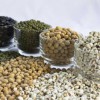 El potasio es un mineral que se encuentra dentro de las células del cuerpo. Es uno de algunos minerales conocidos como electrolitos. Estos minerales (potasio, sodio y cloro) se encuentran en los fluidos dentro y fuera de las células del cuerpo. This 2-page fact sheet is the Spanish language version of Facts about Potassium written by R. Elaine Turner and Linda B. Bobroff, and published by the UF Department of Family Youth and Community Sciences, February 2015.
El potasio es un mineral que se encuentra dentro de las células del cuerpo. Es uno de algunos minerales conocidos como electrolitos. Estos minerales (potasio, sodio y cloro) se encuentran en los fluidos dentro y fuera de las células del cuerpo. This 2-page fact sheet is the Spanish language version of Facts about Potassium written by R. Elaine Turner and Linda B. Bobroff, and published by the UF Department of Family Youth and Community Sciences, February 2015.
http://edis.ifas.ufl.edu/fy1214
Healthy Living: Checking Blood Glucose
 Checking your blood glucose levels is an important part of managing diabetes. Your blood glucose values let you know how well your care plan is working and if you need to make any changes. This 3-page fact sheet was written by Jennifer Hillan and Linda B. Bobroff, and published by the UF Department of Family Youth and Community Sciences, February 2015.(Photo iStock/Thinkstock.com)
Checking your blood glucose levels is an important part of managing diabetes. Your blood glucose values let you know how well your care plan is working and if you need to make any changes. This 3-page fact sheet was written by Jennifer Hillan and Linda B. Bobroff, and published by the UF Department of Family Youth and Community Sciences, February 2015.(Photo iStock/Thinkstock.com)
http://edis.ifas.ufl.edu/fy868
Reporting Domestic Violence in Florida
 Being in a violent relationship can be both a terrifying and hopeless experience. Likewise, the legal process can be both an extensive and complicated process. In this 2-page fact sheet, we address what to expect when reporting the violence to law enforcement. Written by Kathleen Beall and Heidi Radunovich, and published by the UF Department of Family Youth and Community Sciences, December 2014.
Being in a violent relationship can be both a terrifying and hopeless experience. Likewise, the legal process can be both an extensive and complicated process. In this 2-page fact sheet, we address what to expect when reporting the violence to law enforcement. Written by Kathleen Beall and Heidi Radunovich, and published by the UF Department of Family Youth and Community Sciences, December 2014.
http://edis.ifas.ufl.edu/fy1454

